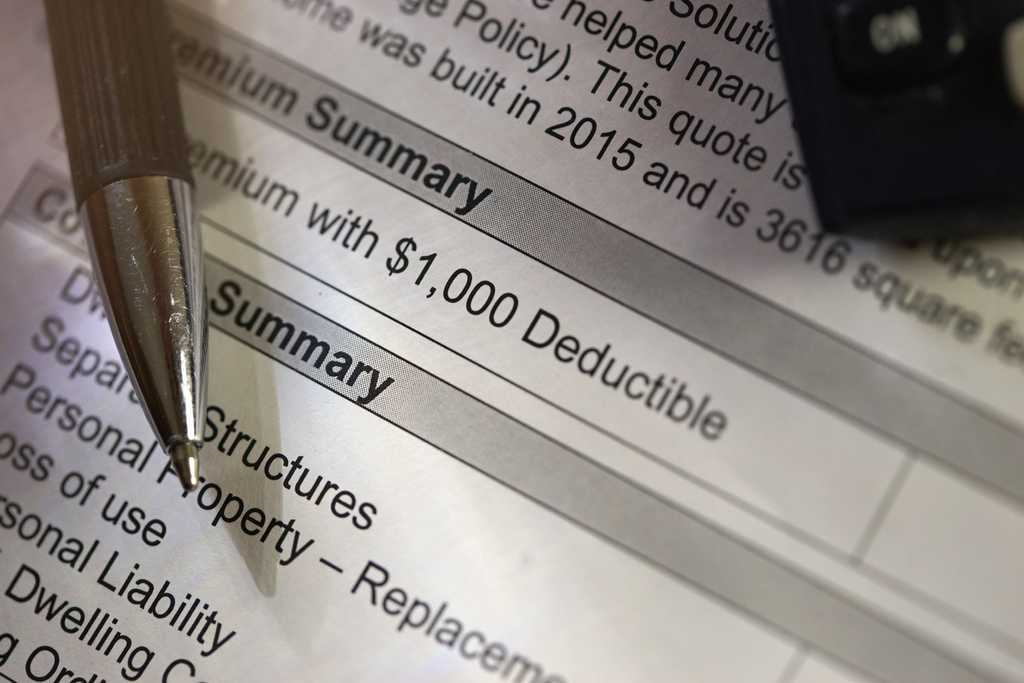Insurance can come in handy during a tough situation. Whether it’s health, auto, or renter’s or homeowner’s insurance, you expect the company to pay up to your coverage amount once you file an approved claim.
Your insurance company won’t pay the entire cost of your claim, however, if you have a deductible. Understanding how deductibles work and how much they require you to pay for a claim is important when considering an insurance policy. Your deductible could impact your premium payment amount and is solely the policyholder’s responsibility.
Here’s what you need to know about deductibles and how they work.
What is an insurance deductible?
An insurance deductible is a lump sum amount of money you must pay once you file a claim in order for coverage to kick in. For example, let’s say you have an auto insurance policy and a $500 deductible. If you get into an accident and need to file a claim with your insurance company, you will need to pay your $500 deductible in order for insurance to cover the costs to repair your car.
In a nutshell, this is how deductibles work but the rules are slightly different depending on which type of insurance policy you have. It’s important to make sure you clearly understand what your insurance will cover and coverage limits as well.
After you pay your deductible, your insurance will provide coverage up to your policy’s limit. After that, you’ll be responsible for the remaining expenses which are also known as “out-of-pocket costs.” You’ll also need to pay a deductible each time you file a claim while you hold your policy. Nevertheless, your insurance deductible is meant to save you quite a bit of money if you ever need to use it.
Types of insurance deductibles
Deductibles are different depending on the type of insurance. With health insurance, there are two main types of deductibles: embedded and non-embedded.
With an embedded insurance deductible, you may have one or more people insured on a health insurance plan, each with their own deductible. Let’s say you, your spouse, and a child are all on the same health plan and have a $3,000 deductible which works out to a $1,000 individual deductible per person.
Your child needs care, and you can pay their $1,000 deductible then receive coverage for their medical costs. With a non-embedded deductible, each individual deductible for the plan is not embedded in the family deductible. This means your entire deductible must be met in order for insurance coverage to kick in.
With homeowner’s insurance, your deductible for perils and natural disasters can range based on a percentage of the policy limit. According to the Insurance Information Institute, wind and hail deductibles can range from 1% to 5%.
Flood insurance deductibles range by state and insurance company and can be either a fixed rate or a percentage of the policy amount. Earthquake insurance can range from 2% to 20% of the replacement value of your home.
Finally, there are different endorsements or riders that can be added to your main insurance policy. This can present different types of deductibles depending on the added coverage.
How does each insurance deductible work?
Deductibles are often required in order to use your insurance coverage. You won’t receive the insurance payment until you pay your deductible amount. In some cases, you can raise your deductible to save money on your insurance premiums.
Usually, the higher your deductible is, the lower your premiums will be. You just need to be prepared to pay a higher deductible upfront in order for insurance to cover the rest of your expenses.
With some insurance policies, especially health insurance, there are certain series that insurance will cover without you paying a deductible. Be sure to carefully read through your policy details to make sure you understand:
- What is covered
- How much your deductible is
- When you need to pay your deductible
Insurance deductible versus copay
Copays are a fixed fee that you pay when you receive a service that falls under your insurance coverage such as a doctor’s visit or picking up prescription drugs. It works similarly to a deductible due to the fact that once you pay your copay, insurance will cover the remainder of the cost for that service or prescription.
However, with a copay, you don’t need to file a claim. Your copay also does not go toward your deductible and depending on your insurance policy, you may not have to pay one at the time for service.
Copays are also part of your out-of-pocket limit for insurance, which is a different amount from your deductible. It’s often larger because it includes payments such as deductibles and coinsurance. Pay close attention to your out-of-pocket limit for your insurance policy because once you reach it, you will not have to pay any more deductibles.
The bottom line
Your deductible is more than just a number. It comes with conditions and variables based on your insurance policy terms. Deductibles are different from copays and you may have the option to increase or decrease your deductible based on your policy.
It’s always a good idea to see if you can set aside your deductible amount in a savings account. That way, if you need to file an insurance claim, you’ll have the money ready and can receive the remainder of your coverage amount.

